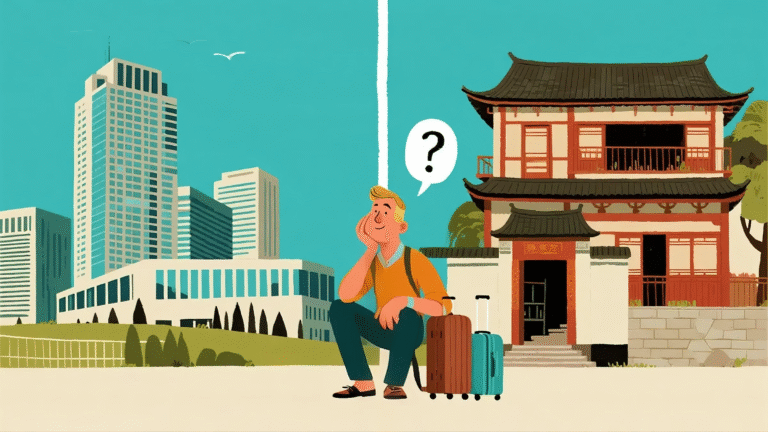Where to Stay in Hong Kong: Your Complete Neighborhood Guide
Hong Kong’s accommodation landscape offers something for every traveler. From luxury harbor-view hotels to budget-friendly hostels tucked away in vibrant neighborhoods, choosing the right area can make or break your Hong Kong experience.
After visiting Hong Kong twelve times over the past decade and staying in seven different neighborhoods, we’ve learned that location matters more here than in most destinations. The city’s unique geography means that picking the wrong area can add hours to your daily commute and thousands of dollars to your taxi bills.
This guide breaks down Hong Kong’s best neighborhoods for travelers in 2026. We’ll help you discover where to find the best value, which areas offer the most authentic local experiences, and how to choose accommodation that aligns with your travel style and budget.
Table of Contents
Understanding Hong Kong’s Geography for Smart Hotel Selection

Hong Kong consists of Hong Kong Island, the Kowloon Peninsula, and the New Territories. Most visitors focus on Hong Kong Island and Kowloon, where the main attractions and business districts are located. Here’s a quick comparison:
Neighborhood | Best For | Typical Price (USD/night) | Pros | Cons |
Central | First-timers, luxury | $150–$800 | Location, transport, food | Expensive, busy |
Tsim Sha Tsui | Views, shopping | $100–$600 | Iconic views, culture | Crowded |
Mong Kok | Budget, local life | $50–$250 | Markets, street food | Noisy, small rooms |
Wan Chai | Nightlife, budget | $80–$400 | Bars, local eats | Can be rowdy |
Causeway Bay | Shopping, families | $100–$400 | Malls, parks | Busy |
Sheung Wan | Local, relaxed vibe | $100–$350 | History, cafes, quieter | Fewer big hotels |
Lantau Island | Nature, tranquility | $120–$500 | Beaches, hiking, Disneyland | Far from center |
The city’s efficient MTR (subway) system connects major areas within 30-45 minutes. However, during peak hours (7:30-9:30 AM and 5:30-7:30 PM), trains become extremely crowded. Staying near attractions you plan to visit most can save significant time and stress.
Key Transportation Facts:
- Airport Express reaches Central in 24 minutes
- Cross-harbor taxi rides cost HK$29+ base fare plus HK$25 tunnel toll
- MTR day passes cost HK$75 and cover most tourist areas
- Peak hour crowds can make 20-minute journeys feel like an hour
Kowloon vs. Hong Kong Island: Which Side Should We Choose?

Kowloon is vibrant, dense, and packed with markets, museums, and street eats. Tsim Sha Tsui and Mong Kok are the heart of Kowloon, offering convenience and iconic views. Hong Kong Island is more modern, with financial centers, upscale restaurants, and historic sites. Central and Sheung Wan provide easy access to attractions and transport. For our first visit, staying near Victoria Harbour—on either side—offers unbeatable convenience and atmosphere.
Kowloon: Energy, Culture, and Iconic Views
Kowloon is a sensory overload in the best way. Tsim Sha Tsui (TST) is its crown jewel, with panoramic harbor views, luxury malls, and cultural hotspots. Mong Kok is a labyrinth of markets, neon, and street food. Both areas are well-connected by the MTR (subway), making it easy to explore.
Our Experience: Our first stay in Tsim Sha Tsui was unforgettable. The nightly Symphony of Lights show, walks along the promenade, and endless food options made every day an adventure. Mong Kok, on another trip, introduced us to the real Hong Kong—chaotic, colorful, and endlessly fascinating.
Hong Kong Island: Modernity, History, and Upscale Comfort
Hong Kong Island is the city’s business and entertainment hub. Central boasts colonial architecture, rooftop bars, and luxury hotels. Sheung Wan offers indie cafes, antique shops, and a relaxed vibe. Wan Chai and Causeway Bay are perfect for nightlife and shopping.
Our Experience: Central’s convenience is unbeatable, but it’s pricier and can feel corporate. Sheung Wan charmed us with its quieter streets and local eateries. Causeway Bay’s malls are a shopper’s paradise, while Wan Chai’s bars offer a glimpse into Hong Kong’s after-dark scene.
Tsim Sha Tsui: The Tourist Hub with Unbeatable Views
Tsim Sha Tsui (TST) remains Hong Kong’s most popular area for first-time visitors. This neighborhood offers easy access to Central, Causeway Bay, and Wan Chai, while providing some of the world’s best harbor views.
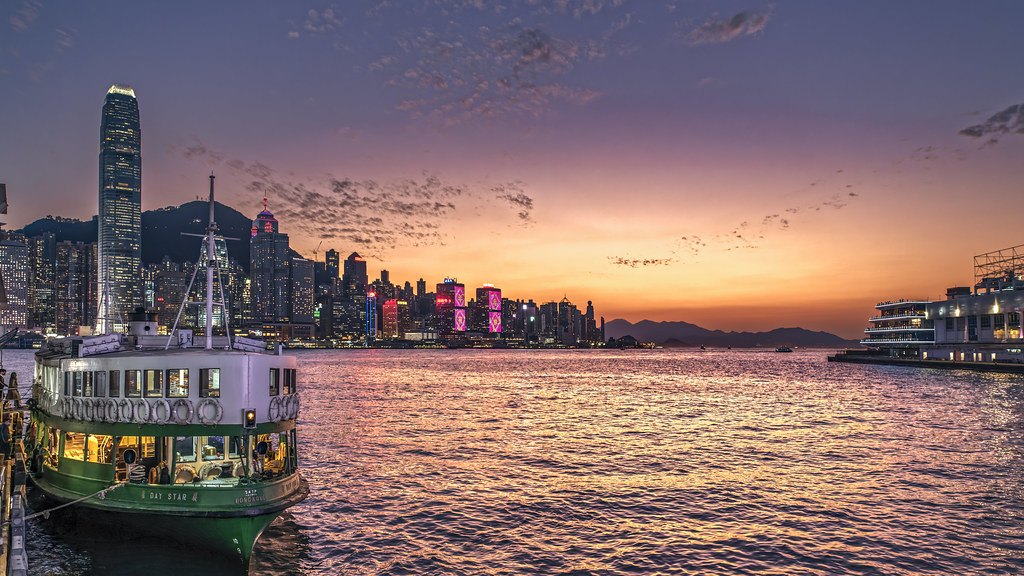
Why Choose Tsim Sha Tsui
TST puts us within walking distance of the Avenue of Stars, Hong Kong Space Museum, and the famous Symphony of Lights show. The neighborhood offers direct airport connections via Airport Express, making arrival and departure seamless.
The shopping here ranges from luxury malls like Harbour City to budget street markets. We’ll find authentic dim sum restaurants alongside international cuisine, all within a few blocks of our hotel.
TST Accommodation Highlights:
- Harbor-view rooms at competitive prices
- Walking distance to Star Ferry terminal
- Direct airport rail connection
- Highest concentration of tourist services
TST Hotel Categories and Pricing
Hotel Category | Price Range (USD) | Notable Features | Best For |
|---|---|---|---|
Luxury | $300-800/night | Harbor views, multiple restaurants, spa | Special occasions, business travel |
Mid-range | $150-300/night | City views, gym, concierge service | Comfort-focused travelers |
Budget | $60-150/night | Basic amenities, shared facilities | Backpackers, budget-conscious visitors |
TST Drawbacks to Consider
The area’s popularity creates significant crowds, especially during weekends and holidays. Hotel prices peak during major events like Chinese New Year and the Hong Kong Sevens rugby tournament.
Street noise can be substantial, particularly on Nathan Road. Request rooms on higher floors facing away from main streets for better rest.
Pros and Cons
Pros | Cons |
Iconic skyline views | Crowded, especially at night |
Easy access to transport | Hotel prices can be high |
Tons of restaurants and shops | Noise and hustle |
Safe, busy at all hours | Small rooms in budget hotels |
Central: Business District Elegance and Premium Convenience
Central serves as Hong Kong’s financial heart and offers some of Asia’s most luxurious hotels. This neighborhood appeals to business travelers and those seeking premium experiences with easy access to both sides of the harbor.
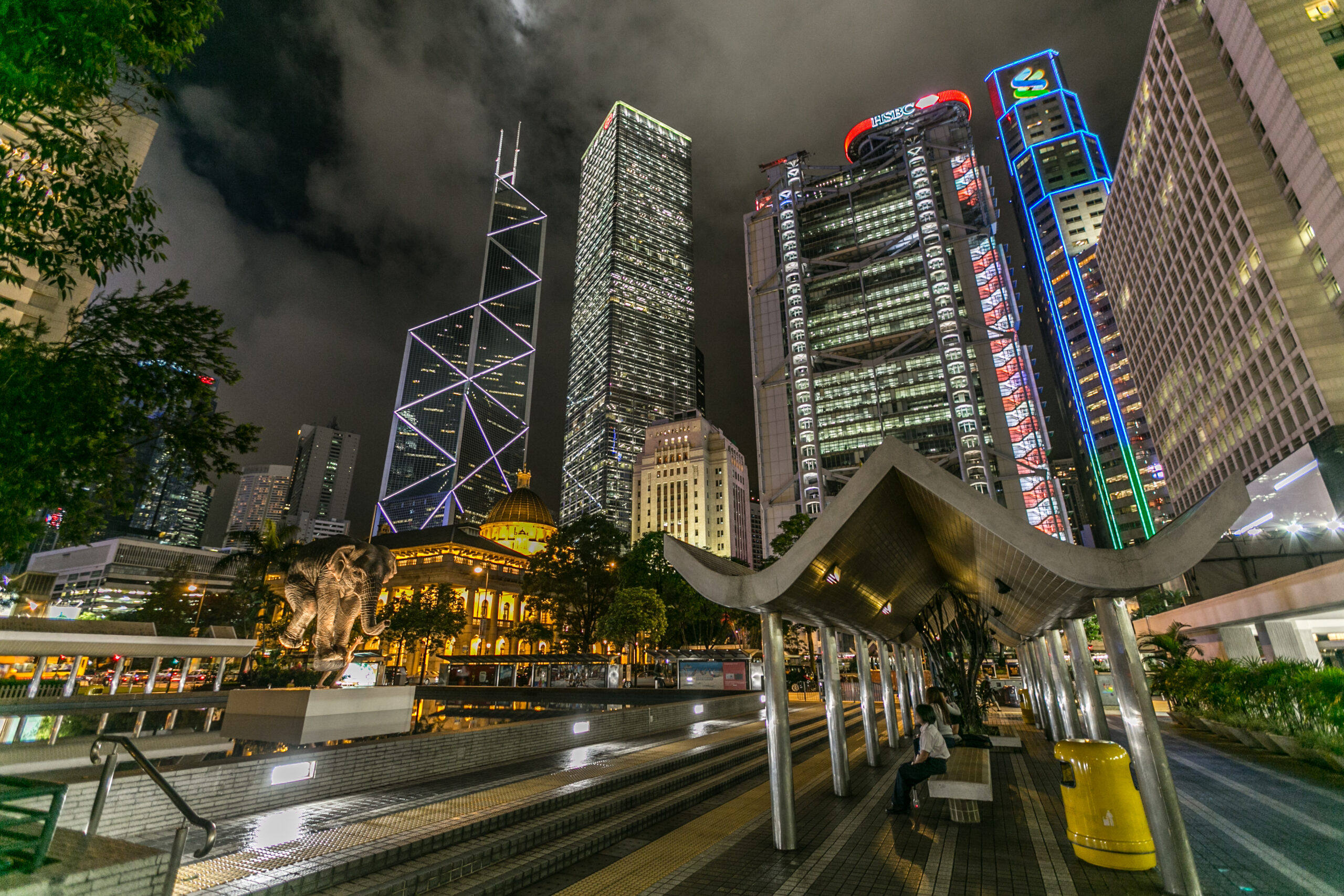
Central’s Unique Advantages
The district connects seamlessly to other areas via multiple MTR lines, buses, and the historic Star Ferry. We’re walking distance from Victoria Peak’s tram station and the IFC Mall’s high-end shopping.
Central’s elevated walkway system lets us navigate between buildings without touching ground level. This proves invaluable during Hong Kong’s intense summer heat or typhoon season.
Central Business District Perks:
- Climate-controlled walkways between major buildings
- Michelin-starred restaurants within walking distance
- Direct airport express service
- Premium shopping at IFC and Landmark malls
Accommodation Options in Central
Central focuses heavily on luxury and business hotels. Budget options are limited, but the area’s convenience often justifies higher costs for short stays.
The neighborhood offers fewer local dining options compared to other areas. Most restaurants cater to business crowds with correspondingly higher prices.
Weekend vs. Weekday Experience
Central transforms dramatically after business hours. The bustling weekday energy gives way to quieter evenings, with many restaurants and bars closing earlier than in other neighborhoods.
Weekend stays offer better hotel rates but fewer dining and shopping options. Consider this trade-off when planning your visit dates.
Pros and Cons
Pros | Cons |
Super convenient | Expensive hotels |
Direct airport access | Can feel corporate |
Walkable to major attractions | Limited budget options |
Great food and nightlife | Busy, especially weekdays |
Causeway Bay: Shopping Paradise with Local Character
Causeway Bay combines serious shopping with authentic local culture. This Hong Kong Island neighborhood offers better value than Central while maintaining easy access to major attractions.
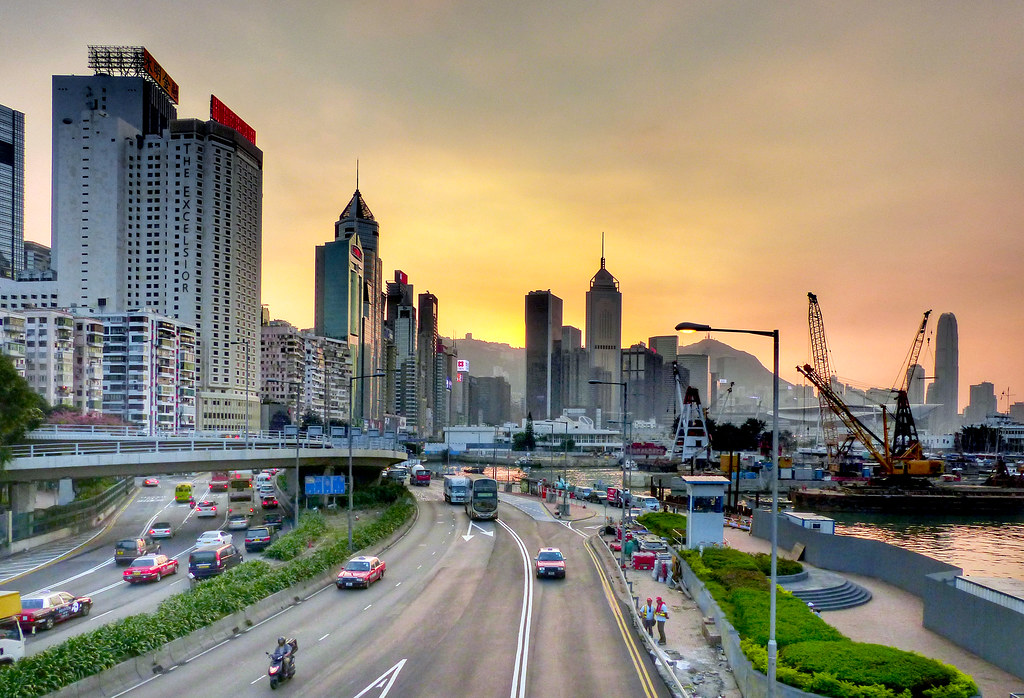
Why Causeway Bay Works for Tourists
The area surrounds you with everything from luxury department stores to local wet markets. Times Square and SOGO provide international brands, while side streets offer traditional Chinese medicine shops and local eateries.
Victoria Park’s expansive green space provides a peaceful retreat from urban intensity. The park hosts cultural events and offers early morning tai chi sessions with locals.
Causeway Bay Accommodation Strategy
Hotels here cost 20-30% less than equivalent properties in Central or TST. You’ll find better food court options and more authentic local experiences without sacrificing convenience.
The MTR’s Island Line connects you to Central in 8 minutes and Admiralty in 5 minutes. Bus routes provide direct access to Stanley Market and other Hong Kong Island attractions.
Causeway Bay Transportation Benefits:
- Three MTR stations serving different areas
- Extensive bus network to all Hong Kong Island destinations
- Taxi stands at major shopping centers
- Walking distance to Happy Valley racecourse
Local Food Scene Advantages
Causeway Bay offers Hong Kong’s best food court experiences at SOGO, Times Square, and Hysan Place. These venues serve authentic dishes at reasonable prices in clean, air-conditioned environments.
Street food options abound, with cart noodles, fish balls, and bubble waffles available from numerous vendors. The concentration of local workers means authentic flavors at local prices.
Pros and Cons
Pros | Cons |
Great for shopping and dining | Busy, especially weekends |
Family-friendly hotels | Can be rowdy at night |
Well-connected by MTR | Higher prices during peak |
Wan Chai: Nightlife Hub with Cultural Depth
Wan Chai balances Hong Kong’s famous nightlife scene with cultural attractions and business facilities. This area suits travelers seeking entertainment options alongside convenient transportation access.

Wan Chai’s Dual Personality
During daytime, Wan Chai functions as a business district with government offices and corporate headquarters. After dark, it transforms into Hong Kong’s primary nightlife destination.
The Hong Kong Convention and Exhibition Centre hosts major events year-round. If you’re attending conferences or exhibitions, staying in Wan Chai eliminates commute stress.
Cultural Attractions in Wan Chai
The neighborhood preserves several historic sites amid modern development. The Blue House cluster showcases traditional Hong Kong architecture, while the Hong Kong Arts Centre presents contemporary performances.
Local temples like Pak Tai Temple offer glimpses into traditional spiritual practices. These sites provide authentic cultural experiences often missed by tourists focused solely on shopping and dining.
Wan Chai Accommodation Considerations
Hotel prices fall between Central’s luxury rates and Causeway Bay’s mid-range options. You’ll pay premium for convention center proximity during major events.
Sound levels vary significantly by location. Areas near bars and nightclubs experience noise until 3-4 AM, while residential sections remain quieter.
Pros and Cons
Pros | Cons |
Great for shopping and dining | Busy, especially weekends |
Family-friendly hotels | Can be rowdy at night |
Well-connected by MTR | Higher prices during peak |
Mong Kok: Authentic Local Life at Budget Prices
Mong Kok offers Hong Kong’s most authentic local experience at the city’s best accommodation values. This Kowloon neighborhood provides deep cultural immersion with significant cost savings.
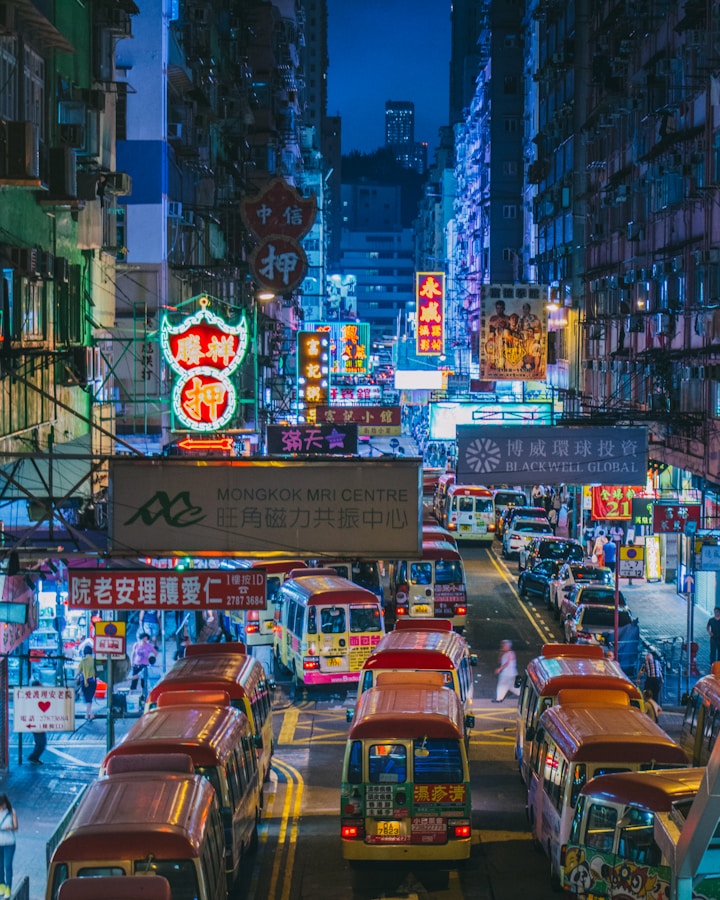
Experiencing Real Hong Kong in Mong Kok
The area maintains traditional Hong Kong character with wet markets, street food stalls, and local shops. Tourists remain relatively rare, creating opportunities for genuine cultural exchange.
Ladies’ Market and Temple Street Night Market provide authentic shopping experiences without tourist markup. You’ll find everything from traditional Chinese medicine to electronics at local prices.
Mong Kok’s Transportation Network
Multiple MTR lines intersect in Mong Kok, providing direct access to all major tourist areas. The journey to TST takes 8 minutes, while Central requires 15 minutes with one transfer.
Bus connections reach every corner of Hong Kong from Mong Kok. This extensive network proves especially valuable for reaching attractions not served by MTR.
Mong Kok Transit Advantages:
- Six MTR stations within walking distance
- Direct buses to beaches, hiking trails, and outlying areas
- Lower taxi fares due to Kowloon location
- Night bus services for late evening returns
Budget Accommodation Excellence
Mong Kok offers Hong Kong’s best value in clean, safe accommodation. Prices start at $40-60 for hostels and $80-120 for hotels with similar quality to $200+ properties in tourist areas.
Many properties occupy upper floors of commercial buildings. While elevators and hallways may appear dated, rooms often feature modern amenities and regular maintenance.
Local Food Paradise
Mong Kok provides Hong Kong’s most diverse and affordable food scene. From street cart noodles costing $3-4 to high-quality restaurants serving authentic Cantonese cuisine, every budget finds satisfaction here.
The area’s food courts and cha chaan tengs (tea restaurants) serve local workers, ensuring authentic flavors and generous portions. Breakfast sets cost $5-8, while dinner rarely exceeds $15-20 per person.
Pros and Cons
Pros | Cons |
Affordable hotels and hostels | Noisy, crowded |
Local life, vibrant atmosphere | Rooms can be very small |
Great for night owls | Less polished than other areas |
Admiralty: Strategic Location for Multi-Area Exploration
Admiralty functions as Hong Kong’s geographic center, offering easy access to all major areas. This small neighborhood appeals to travelers prioritizing location over neighborhood character.
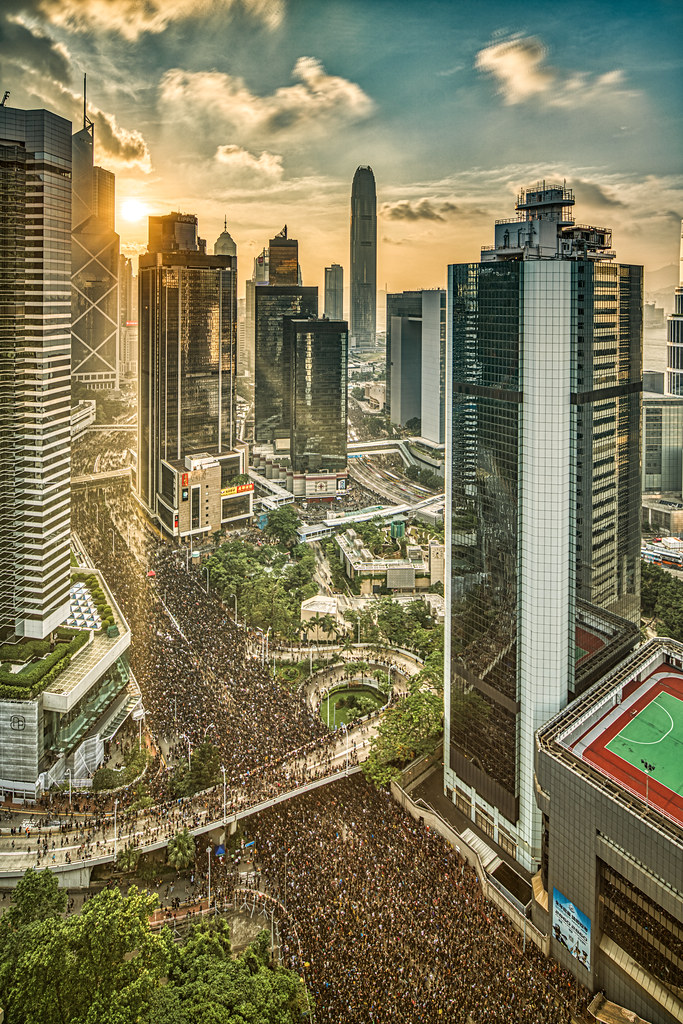
Admiralty’s Strategic Benefits
The area sits between Central’s business district and Wan Chai’s nightlife, providing walking access to both. MTR connections reach every tourist destination within 20 minutes.
Pacific Place mall offers luxury shopping and dining in a concentrated space. The complex’s hotels, restaurants, and services create a self-contained experience for those preferring minimal neighborhood exploration.
Peak Tram Access Advantage
Admiralty provides the shortest route to the Peak Tram station. This proximity proves valuable during peak tourist seasons when tram queues extend several hours.
The neighborhood’s elevated walkways connect directly to the tram’s lower terminal, avoiding street-level crowds and weather exposure.
Sheung Wan: Emerging Neighborhood with Character
Sheung Wan has evolved from a traditional trading district into Hong Kong’s hippest neighborhood. This area offers unique experiences while maintaining easy access to major attractions.
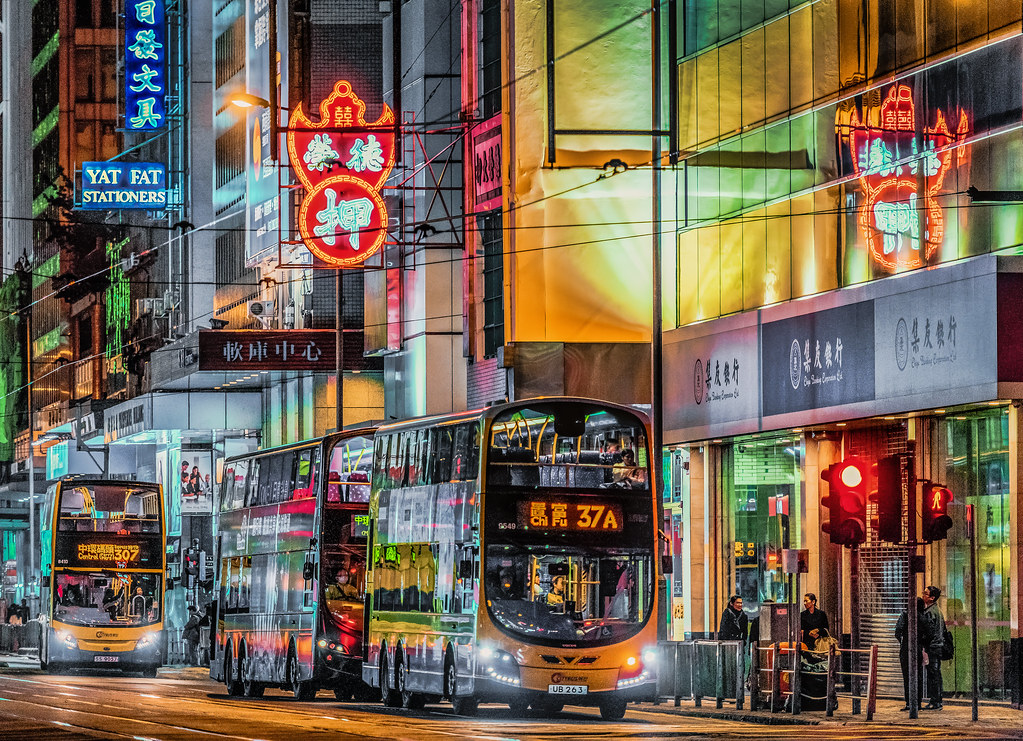
Sheung Wan’s Transformation
The neighborhood blends traditional Chinese medicine shops with trendy cafes and galleries. This combination creates unique experiences unavailable in other tourist areas.
Antique shops, art galleries, and boutique stores line the streets between traditional businesses. The contrast provides Instagram-worthy moments and authentic cultural encounters.
Food Scene Innovation
Sheung Wan leads Hong Kong’s craft beer and specialty coffee movements. Small bars and cafes offer international standards with local twists.
Traditional dim sum restaurants operate alongside modern interpretations of Cantonese cuisine. This range allows exploration of both classic and contemporary Hong Kong food culture.
Sheung Wan Dining Highlights:
- Traditional dried seafood shops for authentic ingredients
- Craft breweries with local and international selections
- Specialty coffee roasters and cafes
- Modern Cantonese restaurants with innovative approaches
Airport Area: Transit Convenience for Short Stays
Staying near Hong Kong International Airport suits travelers with early flights, long layovers, or short visits focused on specific activities.
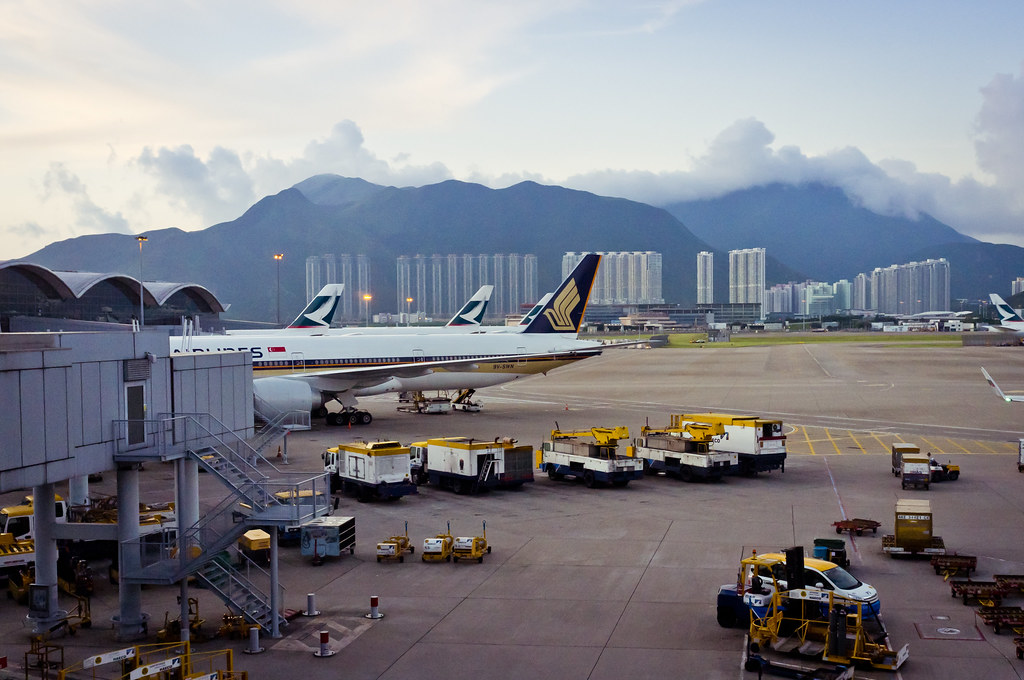
When Airport Hotels Make Sense
Business travelers attending single meetings or conferences often benefit from airport proximity. The Airport Express provides 24-minute access to Central when needed.
Transit passengers with 8+ hour layovers can experience Hong Kong highlights without committing to city-center accommodation costs.
Airport Area Limitations
Limited local dining and entertainment options require planning. Most activities involve traveling to the city center, reducing the accommodation location’s benefits.
Hotel rates often match Central prices without corresponding amenities or experiences. Consider cost-benefit carefully against city-center alternatives.
Seasonal Considerations for Hong Kong Accommodation
Hong Kong’s climate and event calendar significantly impact accommodation choice and pricing throughout the year.
Peak Season Planning (October-April)
Cooler, drier weather attracts maximum visitors during these months. Hotel rates increase 40-60% during Chinese New Year, Christmas, and Easter periods.
Book accommodation 3-4 months in advance for October-December visits. January-February requires even earlier booking due to Chinese New Year celebrations.
Summer Strategy (May-September)
Hot, humid weather with frequent rain affects neighborhood choice. Areas with covered walkways and air-conditioned shopping become more appealing.
Hotel rates drop 20-40% during summer months, but typhoon season (July-November) can disrupt travel plans. Consider flexible booking options during these periods.
Event-Driven Pricing
Major events like the Hong Kong Sevens (March/April), Art Basel (March), and various trade fairs cause dramatic price increases in specific neighborhoods.
Research event calendars before booking. Staying slightly farther from event venues can provide significant savings without major inconvenience.
Budget Breakdown by Neighborhood
Understanding accommodation costs across Hong Kong’s neighborhoods helps optimize your travel budget while meeting comfort expectations.
Neighborhood | Budget Hotels | Mid-Range Hotels | Luxury Hotels | Hidden Costs |
|---|---|---|---|---|
Tsim Sha Tsui | $70-120/night | $180-350/night | $400-800/night | Tourist restaurant premiums |
Central | $150-250/night | $300-500/night | $500-1200/night | Business lunch pricing |
Causeway Bay | $60-100/night | $150-280/night | $350-600/night | Shopping temptations |
Wan Chai | $80-130/night | $200-320/night | $400-700/night | Nightlife expenses |
Mong Kok | $45-80/night | $100-180/night | $250-400/night | Minimal hidden costs |
Admiralty | $120-200/night | $250-400/night | $450-800/night | Luxury mall pricing |
Sheung Wan | $90-140/night | $180-300/night | $350-650/night | Craft beverage premiums |
Money-Saving Accommodation Tips
Book directly with hotels for potential upgrades and flexible cancellation. Many properties offer rate matching with booking sites while providing additional benefits.
Consider apartment rentals for stays over 5 days. These options often include kitchen facilities, reducing dining costs significantly.
Join hotel loyalty programs before booking. Even basic membership levels often provide room upgrades, late checkout, and other valuable benefits.
Transportation Integration with Hotel Choice
Your accommodation’s transportation connections significantly impact daily convenience and costs throughout your Hong Kong visit.
MTR Access Priorities

Hotels within 5-minute walks of MTR stations provide maximum flexibility and convenience. Consider multiple line access for easier transfers to different areas.
Stations serving Airport Express offer luggage storage and in-town check-in services. These features prove valuable for final-day shopping and sightseeing.
Bus Network Utilization
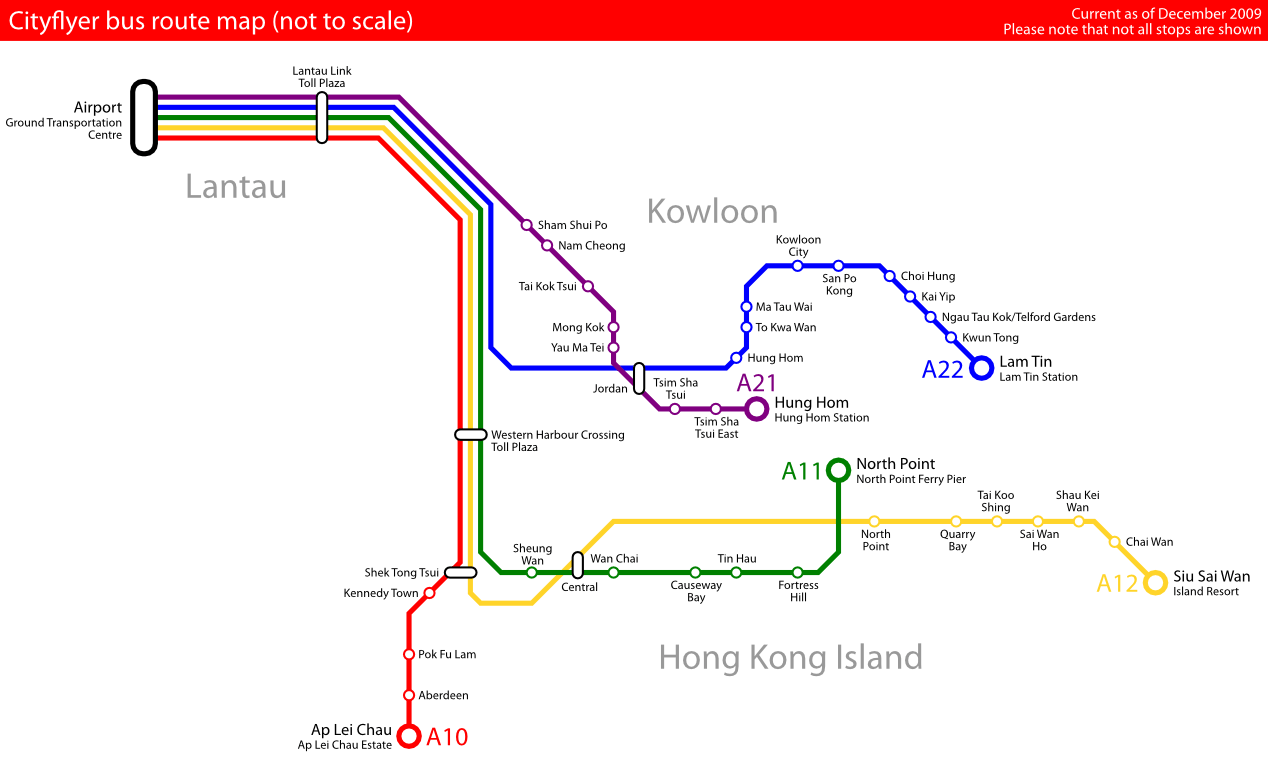
Areas with extensive bus connections reach attractions not served by MTR. This access proves especially valuable for visiting beaches, hiking trails, and outlying islands.
Night bus services from entertainment areas like Wan Chai and TST extend your evening options without expensive taxi rides.
Taxi Considerations
Hong Kong Island and Kowloon taxis cannot cross between areas during peak hours. Consider this restriction when choosing accommodation relative to your planned activities.
Red taxis (Hong Kong Island and Kowloon) charge base fares starting at HK$29, while green taxis (New Territories) start at HK$25.50. Cross-harbor journeys include additional HK$25 tunnel tolls.
Safety and Security Across Neighborhoods
Hong Kong maintains excellent safety standards across all tourist areas, but understanding neighborhood characteristics helps optimize comfort and security.
Universal Safety Standards
All recommended neighborhoods maintain 24-hour police presence and extensive CCTV coverage. Street crime remains extremely rare, with most incidents involving petty theft.
Emergency services respond rapidly throughout the city. English-speaking operators are available for tourist assistance.
Neighborhood-Specific Considerations
Mong Kok’s higher density creates crowded conditions that may feel overwhelming for some travelers. The area remains safe but requires awareness of personal space and belongings.
Wan Chai’s nightlife areas experience higher activity levels after midnight. Female travelers may prefer main street locations over side alleys during late hours.
TST’s tourist concentration attracts occasional scams targeting visitors. Common schemes involve overpriced restaurant recommendations and fake discount shopping offers.
Cultural Immersion Through Accommodation Choice

Your neighborhood selection significantly impacts cultural experiences and local interactions during your Hong Kong visit.
Maximum Local Interaction
Mong Kok and Sheung Wan provide the most authentic cultural experiences with regular local interactions. Street markets, neighborhood restaurants, and community spaces offer genuine glimpses into Hong Kong life.
Consider language apps for basic Cantonese phrases. Locals appreciate effort and often respond with patience and friendliness.
Balanced Cultural Experience
Causeway Bay and Wan Chai offer cultural depth while maintaining tourist-friendly amenities. These areas provide local experiences without communication barriers or navigation challenges.
Traditional wet markets, local temples, and neighborhood festivals occur regularly in these areas. Participating in these activities creates memorable cultural moments.
Comfort-Focused Cultural Exposure
Central and TST provide cultural experiences within tourist-friendly environments. Museums, cultural centers, and organized tours offer structured cultural learning opportunities.
These areas suit travelers wanting cultural exposure without the uncertainty of completely local environments.
Making Your Final Accommodation Decision
Choosing where to stay in Hong Kong depends on balancing your priorities: budget, convenience, cultural immersion, and specific interests.
Decision Framework
Prioritize Location If:
- We’re visiting for less than 4 days
- We have mobility limitations
- We’re traveling with young children
- We’re attending specific events or meetings
Prioritize Value If:
- We’re staying more than 1 week
- We’re comfortable using public transportation
- We enjoy exploring local neighborhoods
- Budget optimization is crucial
Prioritize Experience If:
- We’re seeking authentic cultural immersion
- We have flexible scheduling
- We enjoy discovering hidden gems
- This is a repeat visit to Hong Kong
Booking Strategy Recommendations
Research hotel review sites, but focus on recent reviews from travelers with similar priorities. Pay attention to comments about noise levels, renovation status, and staff service quality.
Consider booking accommodation for your first 2-3 nights only. This strategy allows neighborhood exploration before committing to longer stays.
Book refundable rates when possible. Hong Kong’s compact size makes changing neighborhoods feasible if your initial choice doesn’t meet expectations.
Frequently Asked Questions
What’s the best neighborhood for first-time Hong Kong visitors?
Tsim Sha Tsui offers the ideal balance of convenience, attractions, and tourist services for first-time visitors. The area provides easy airport access, harbor views, and walking distance to major sights. While prices run higher than other areas, the convenience and experience justify costs for short visits.
How much should I budget for accommodation in Hong Kong?
Budget travelers can find clean, safe accommodation for $50-80 per night in areas like Mong Kok. Mid-range options cost $150-300 in most neighborhoods, while luxury properties range from $400-800. Add 15-20% for peak season visits and major holidays.
Is it safe to stay in Mong Kok as a solo female traveler?
Mong Kok maintains excellent safety standards with 24-hour police presence and extensive lighting. The area’s density creates busy streets even late at night, providing natural security. Choose accommodations on main streets rather than narrow alleys for maximum comfort.
Which area offers the best food experiences?
Mong Kok provides the most authentic and diverse food scene at local prices. Street food, traditional restaurants, and local markets offer genuine Hong Kong flavors. Causeway Bay combines local options with international choices, while Central focuses on upscale dining experiences.
Do I need to stay near the airport for early flights?
Hong Kong’s Airport Express operates from 5:50 AM to 12:48 AM with 24-minute journey times to Central. Unless our flight departs before 7 AM, staying in the city center provides better value and experiences. Airport hotels suit business travelers with single-day visits or long layovers.
What’s the difference between Hong Kong Island and Kowloon for accommodation?
Hong Kong Island (Central, Wan Chai, Causeway Bay) offers business district convenience and upscale shopping. Kowloon (TST, Mong Kok) provides better value and more local character. Both areas connect easily via MTR, so choose based on atmosphere preference rather than accessibility concerns.
How far in advance should I book Hong Kong accommodation?
Book 2-3 months ahead for peak season visits (October-April) and 6-8 weeks for summer stays. Major events like Chinese New Year require 4-5 months advance booking. Last-minute deals occasionally appear, but availability becomes limited in preferred neighborhoods.
Are vacation rentals better than hotels in Hong Kong?
Vacation rentals work well for stays over 1 week or groups of 4+ people. Kitchen facilities reduce dining costs significantly in this expensive city. However, hotels provide better locations, daily housekeeping, and concierge services valuable for short visits and first-time travelers.
Which neighborhood has the best shopping access?
Causeway Bay offers the most comprehensive shopping from luxury malls to local markets. TST provides tourist-focused shopping with harbor views. Central emphasizes luxury brands and business services. Mong Kok features authentic local markets and electronics at the best prices.
How do typhoons affect accommodation choice?
Typhoon season (July-November) can disrupt transportation and outdoor activities. Choose neighborhoods with covered walkways and underground shopping for weather protection. Central and TST offer the most covered pedestrian areas. Book flexible rates during typhoon season for potential itinerary changes.
Conclusion: Your Perfect Hong Kong Base

Hong Kong’s diverse neighborhoods each offer unique advantages for different travel styles and priorities. First-time visitors often find the most success in Tsim Sha Tsui or Central, where tourist infrastructure and convenience maximize limited time.
Budget-conscious travelers discover exceptional value in Mong Kok’s authentic local environment. The money saved on accommodation allows for enhanced dining and shopping experiences throughout the city.
Cultural enthusiasts thrive in Sheung Wan’s evolving arts scene or Causeway Bay’s blend of modern and traditional elements. These neighborhoods provide Instagram-worthy moments alongside genuine cultural immersion.
Business travelers appreciate Central’s connectivity and premium services, while nightlife enthusiasts gravitate toward Wan Chai’s entertainment options.
Remember that Hong Kong’s compact size and excellent transportation network mean no choice is truly wrong. The MTR system connects all major areas within 30 minutes, allowing easy exploration regardless of your accommodation base.
Consider your priorities, travel style, and budget when making the final decision. The perfect Hong Kong accommodation enhances your experience while providing comfort, convenience, and value that matches your expectations.
Start with this guide’s recommendations, but remain flexible. Hong Kong’s dynamic nature means new hotels, neighborhoods, and experiences constantly emerge. Your accommodation choice becomes the foundation for discovering this remarkable city’s endless possibilities.
READ ALSO: Hong Kong vs Shanghai – Which City Should I Visit








